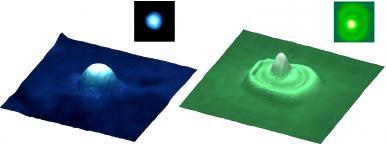
Internet is an essential tool for everyone and the danger that may arise from our communications to be intercepted and the information stolen is crucial. If Internet could achieve the ability to transmit information via quantum systems, many of these security problems would be solved. However, the dream of a “Quantum Internet”, that is a network of quantum nodes connected by “flying qubits”, typically photons, which travel over long distances at the speed of light, is still far away. Commercial communication systems based on quantum cryptography are already available, offering greater security because they use keys encoded in the states of quantum systems (photons) that are exchanged within the network.
For the implementation of a reliable quantum Internet, a key ingredient is therefore the development of the quantum light source capable of providing photons with the characteristics that are required by nascent communication technologies. Among the different platforms for photon generation, those based on semiconductor “Quantum Dot”, also called “artificial atoms”, are among the most promising, as they
allow the engineering of the emitted photons and can be integrated with other photonic components and electronics in miniature chips.
The group of Prof. Stefano Sanguinetti, professor of Matter Physics at the Department of Materials Science, is at the forefront in the study and manufacture of these artificial atoms, having developed an innovative technology for their production within international collaborations, involving Japanese research centers (NIMS Tsukuba), European (JKU Linz and University of Florence) and Chinese (University of Electronic Science and Technology, Chengdu). This technology, called “droplet epitaxy” by its inventor Dr. Noboyuki Koguchi (NIMS), allows to obtain quantum dots, which can be integrated into electronic devices and photonic circuits, emitting photons with the required characteristics by
quantum communication technologies. The droplet epitaxy in fact allows the extension of the range of design degrees of freedom of quantum dots, that is to say materials, dimensions, shape and density, allowing at the same time the precise choice of symmetry and topology of the nanostructures.
Given the increasing relevance of this technology for the production of photon emitters for quantum communication, Nature Materials has decided to dedicate one of its reviews to the epitaxy droplet. This, entitled “Droplet epitaxy of semiconductor nanostructures for quantum photonic devices” (doi: https://doi.org/10.1038/s41563-019-0355-y) was written in collaboration by international leaders in the
field of quantum photonics and of the droplet epitaxy technique (Massimo Gurioli, Zhiming Wang, Armando Rastelli, Takashi Kuroda and Stefano Sanguinetti).